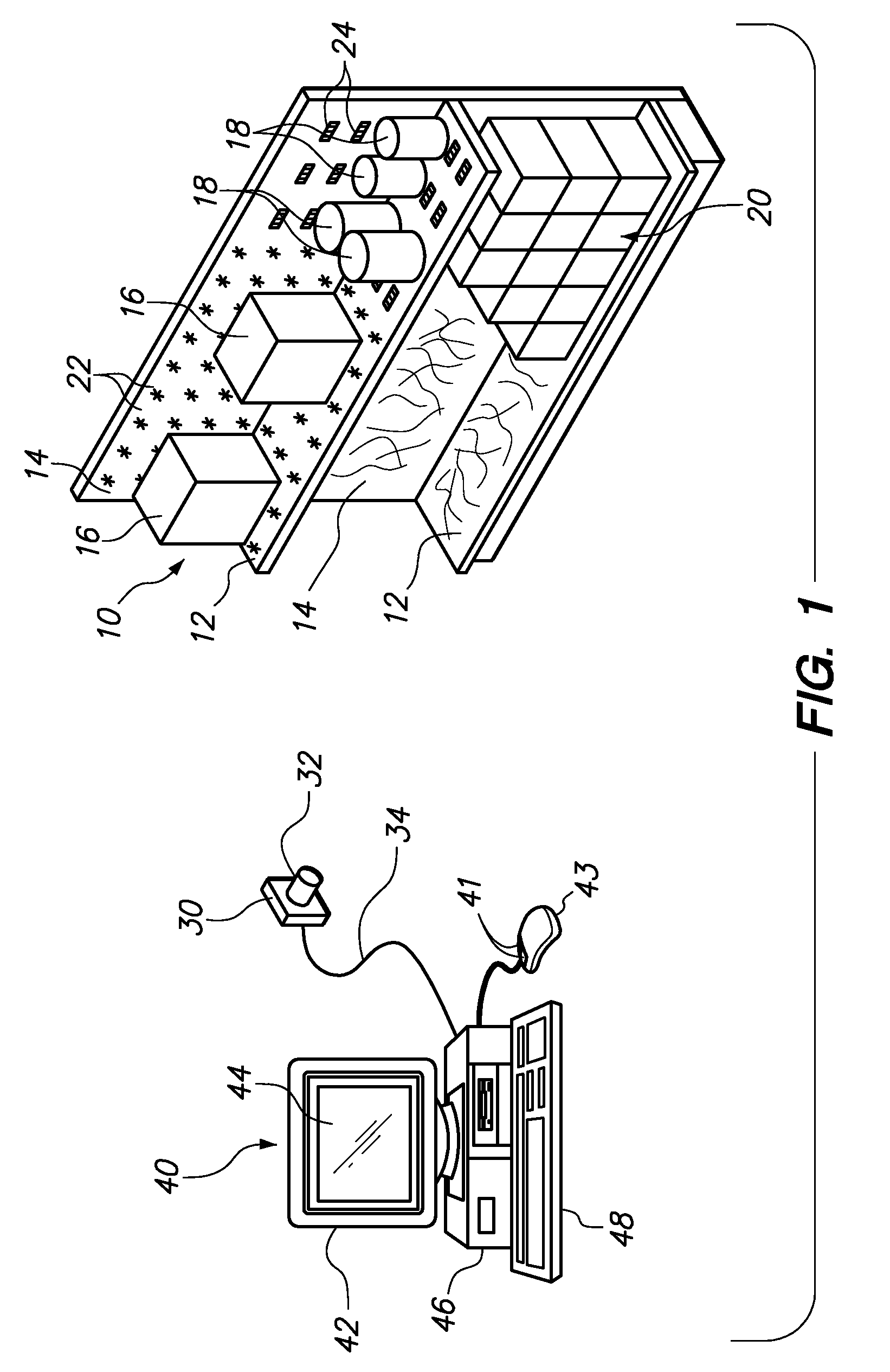Using Cameras to Monitor Actual Inventory
a technology of actual inventory and cameras, applied in the field of methods and systems for monitoring inventory, can solve the problems of inability to provide real-time inventory reports, risk of mistakes, and inability to provide barcodes a complete answer to inventory management,
- Summary
- Abstract
- Description
- Claims
- Application Information
AI Technical Summary
Benefits of technology
Problems solved by technology
Method used
Image
Examples
Embodiment Construction
[0017]The present invention includes systems and methods for monitoring inventory. The systems and methods may be implemented in various business environments, including, without limitation, retail stores, wholesale warehouses, and manufacturing plants. The systems and methods are particularly well suited for real time or near real time monitoring of actual inventory, such as the inventory of items that are present on a shelf structure within the store, warehouse, or plant facility. A particular advantage of the present invention is the ability to rapidly determine inventory levels without needing to positively identify each individual unit of inventory.
[0018]One embodiment of the invention provides a method for monitoring inventory. The method includes providing a surface having an optically identifiable characteristic that is distinct from an inventory item and directing a camera toward the surface. The surface may be a horizontal, vertical, tilted or curved, such as with a floor,...
PUM
 Login to View More
Login to View More Abstract
Description
Claims
Application Information
 Login to View More
Login to View More - R&D
- Intellectual Property
- Life Sciences
- Materials
- Tech Scout
- Unparalleled Data Quality
- Higher Quality Content
- 60% Fewer Hallucinations
Browse by: Latest US Patents, China's latest patents, Technical Efficacy Thesaurus, Application Domain, Technology Topic, Popular Technical Reports.
© 2025 PatSnap. All rights reserved.Legal|Privacy policy|Modern Slavery Act Transparency Statement|Sitemap|About US| Contact US: help@patsnap.com



